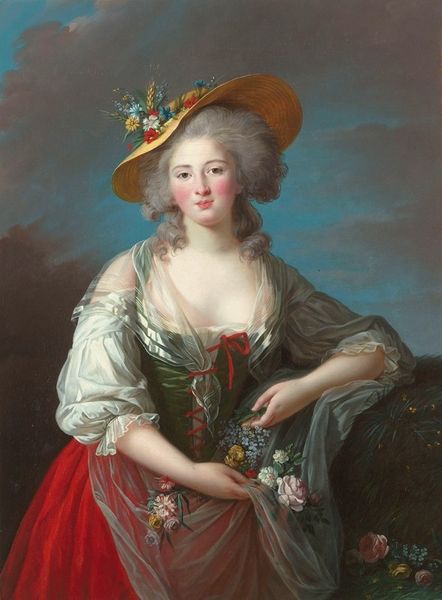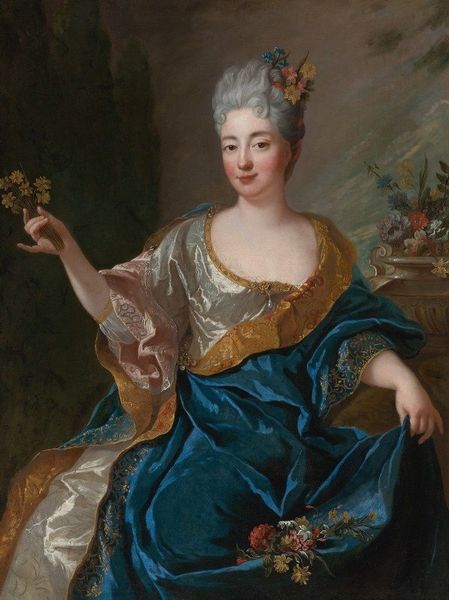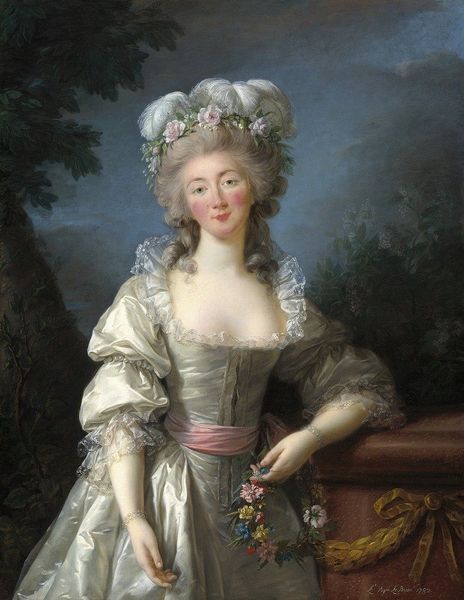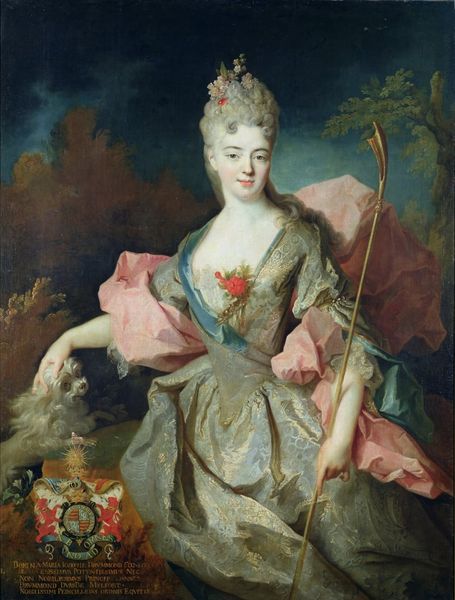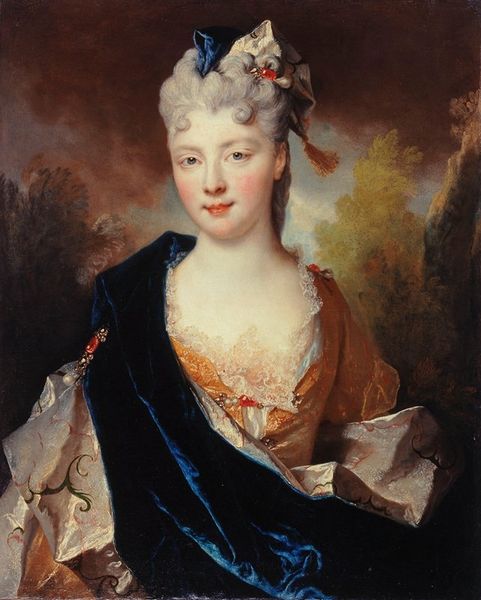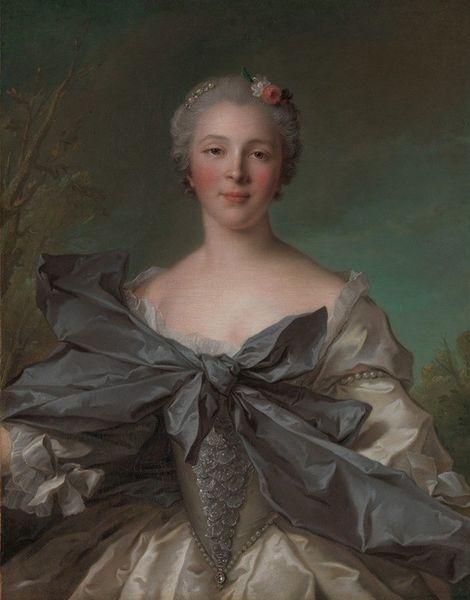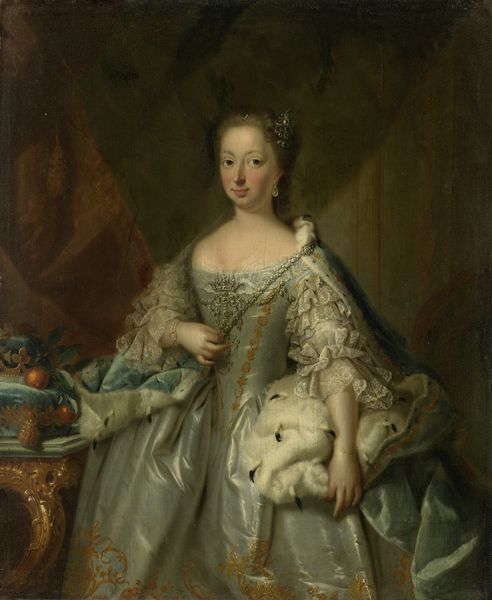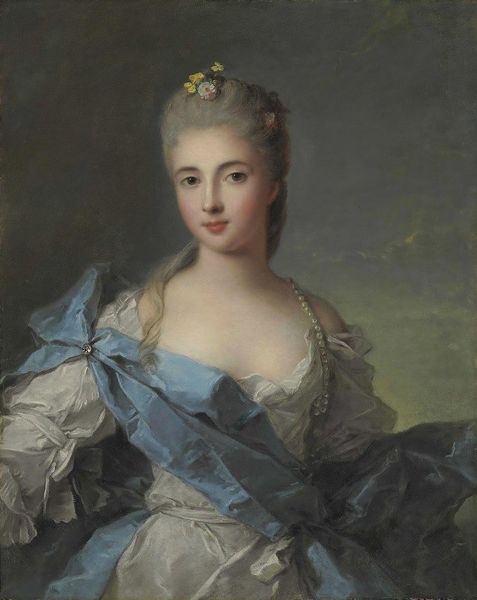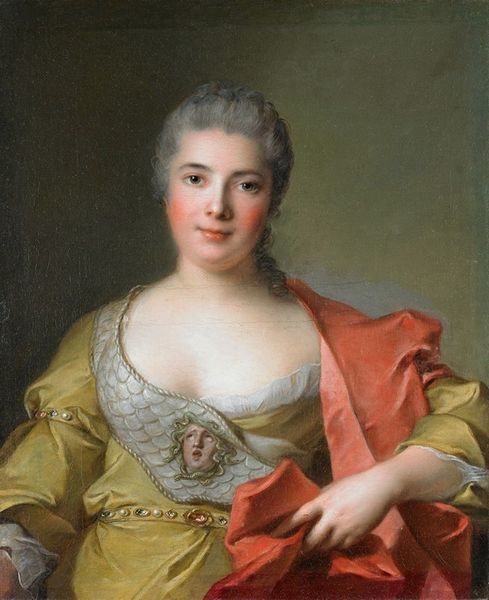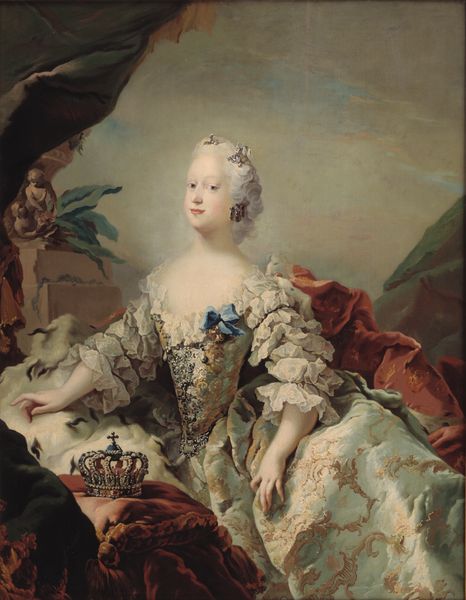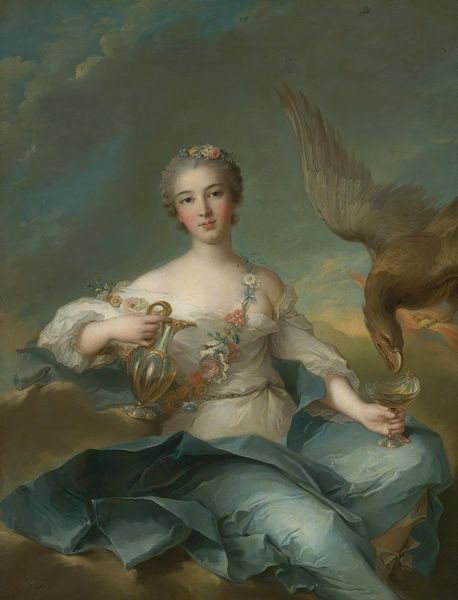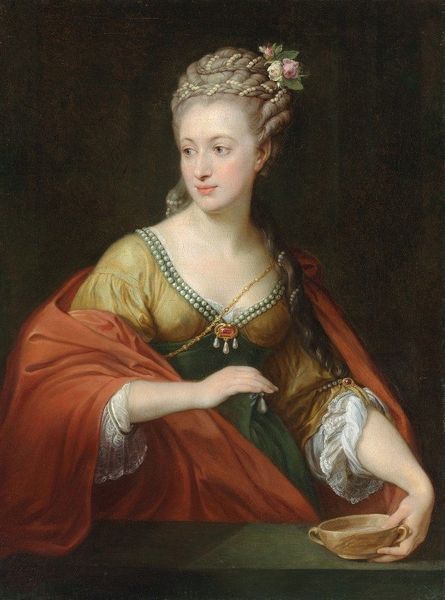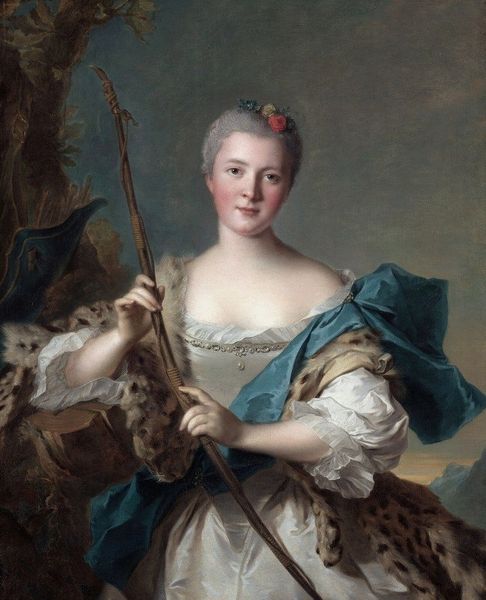
painting, oil-paint
#
portrait
#
figurative
#
allegory
#
painting
#
oil-paint
#
history-painting
#
rococo
Copyright: Public Domain: Artvee
Editor: Here we have Jean-Marc Nattier’s “Madame Le Fèvre de Caumartin as Hebe,” painted in 1753 with oil on canvas. The piece exudes a soft elegance, but there's also something artificial about it that I can’t quite place. How would you interpret this work from a formal perspective? Curator: The painting presents a fascinating study in contrasts and textures. Consider first the use of color; Nattier employs a limited palette dominated by blues and whites. This chromatic restraint imbues the canvas with a sense of ethereal distance, don't you think? And what about the smoothness of the skin compared to the detailed rendering of the drapery? Editor: Yes, I notice that. The texture in the fabric is much more prominent, making it appear heavier than the subject’s skin. Curator: Precisely. This juxtaposition creates a dynamic tension, doesn’t it? And what do you make of the compositional structure? How does the artist use line and form to guide the viewer’s eye? Editor: The figure's placement in the center draws immediate attention. Then the diagonal created by her arm and the eagle pushes my gaze further across the scene. Curator: An astute observation. Notice how Nattier masterfully uses asymmetry to prevent the composition from becoming static. The dark presence of the eagle balances the lighter tones of the sky and figure. These are deliberate formal choices designed to create visual interest. Have your feelings about artificiality shifted? Editor: They have. I see now that it's part of a calculated artistic design to produce a very specific effect. I see how Nattier uses color, texture and form to generate something much more complex than mere portraiture. Curator: Indeed. By examining these elements, we can see how Nattier constructs not just a likeness, but an entire visual experience using artifice as a tool. Editor: I appreciate how this formal analysis opens up avenues for understanding how the artist is actively building meaning within the painting.
Comments
No comments
Be the first to comment and join the conversation on the ultimate creative platform.
